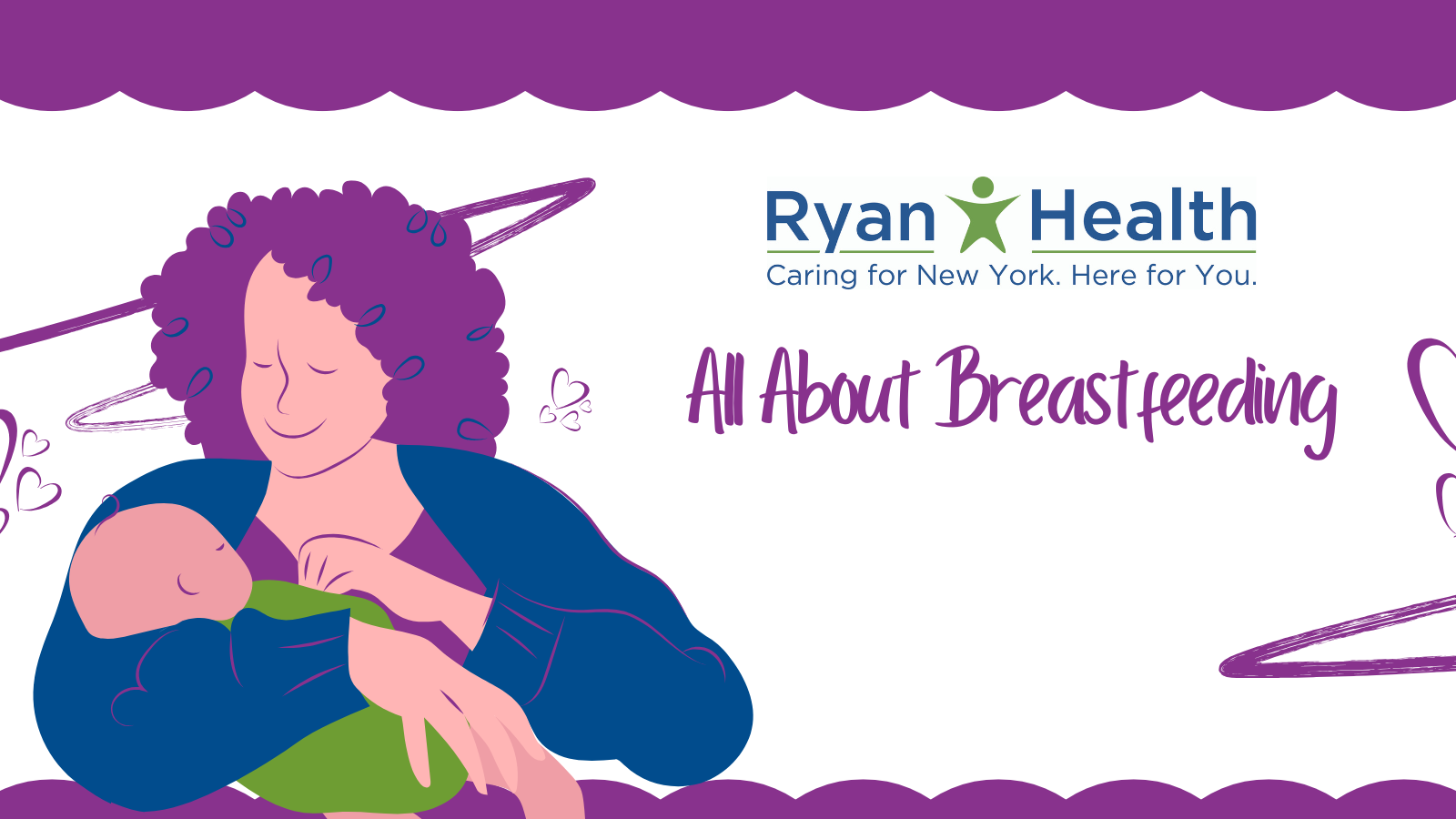
“For some women, it comes pretty easily; the baby just latches right on. But for others, there can be challenges.”
Katie Kelter, MD, IBCLC, FAAP, NABBLM-C, is a pediatrician at Ryan Health | Women & Children’s who specializes in breastfeeding and lactation. She knows the first few weeks of breastfeeding can be tough, but she says it gets easier.
“Just trust in yourself and your baby,” she says.
There isn’t a lot of preparation necessary to breastfeed. You can attend a prenatal breastfeeding class for tips or techniques. Or talk to your provider and ask questions. Sign up for WIC if you’re eligible or explore hiring a doula to assist with the delivery and breastfeeding. But most of all, don’t worry. (There is a list of resources at the end of this article.)
So much of breastfeeding and lactation is innate and an instinct. Doctors place the newborn infant on the mother’s chest, skin to skin, so the baby can find its way to the breast to begin feeding. This period right after delivery is the most important time for the baby to latch on.
If the baby is delivered using a C-section, as long as the mother is awake the baby can be placed skin to skin on her chest immediately after delivery while the obstetrician is completing the surgery. If the mother is not awake or well enough to have the baby with her, her partner or loved one can hold the baby skin to skin. While recovering from a C-section, the mother may find that positions such as the football hold may be more comfortable. The medical team can provide assistance with positioning.
If the Baby Doesn’t Latch On
Most babies easily latch on themselves. But there are instances where baby and mother need a little more guidance. If your baby isn’t latching within the first hour, ask the doctor or nurse for assistance. For instance, the mother may not be producing enough milk due to medical issues, or the baby might have an issue with its mouth or tongue. And sometimes they both just need a little help.
One effective technique to feed your baby if it isn’t latching on is hand expression of the milk. Put the milk in a spoon and feed your baby that way. But if your baby isn’t latching on by the second day, begin using a breast pump until it learns to latch on, so your baby can enjoy the health benefits of breast milk.
How Much Should You Breast Feed?
It’s hard to overfeed a breastfeeding baby because they’re in control of how much milk they’re getting.
On average, breastfeeding your baby should take no more than 45 minutes. That’s about 10 to 20 minutes on each breast. Your baby may get “milk drunk” and fall asleep. This could just be a pause, and it might not be full; sucking on its finger is a cue your baby is still hungry. If you’re feeding more than 45 minutes, or the baby is fussy, or there aren’t three to four wet diapers a day, your baby isn’t getting enough milk. You should follow up with your pediatrician.
It’s important to note that everyone is different — whether that is how much milk the mother produces, or when during the day that occurs, or how good the baby is at extracting milk. You should bring your baby to your breast whenever it is hungry. Feed on demand, following the baby’s cues. Trust yourself and your body. If you need to, take a breath, comfort the baby and try again.
The Importance of Breast Milk
Breastfeeding your baby stimulates the breast and hormones, and sends signals to the brain to produce more milk. In the first few days, your breast won’t produce much milk. But babies are born with extra fat and extra fluids, so they will be fine. The breast milk those first few days might just be drops but they will be filled with vitamins and minerals. It’s called “liquid gold,” and your baby won’t need more than those small quantities. Over those first few days the baby’s stomach will grow, and you will produce more milk. The baby will begin to gain weight, and will be peeing and pooping more.
Breastfeeding is good for both your baby and you. According to the Centers for Disease Control and Prevention (CDC). Babies who are breastfed have a lower risk of asthma, obesity, type 1 diabetes, ear infections, sudden infant death syndrome (SIDS), and diarrhea and vomiting.
Mothers who breastfeed their babies have a lower risk of breast cancer, ovarian cancer, type 2 diabetes, and high blood pressure.
The US Dietary Guidelines for Americans recommend that infants be exclusively breastfed for the first six months. The American Academy of Pediatrics and the World Health Organization also recommend exclusive breastfeeding for the first six months, with continued breastfeeding until at least two years and beyond, as long as mutually desired by mother and child.
“We keep finding more and greater benefits to breastfeeding, for both the baby and the mother,” Dr. Kelter says.
———
Breastfeeding resources:
- In-person or virtual lactation support
- NYC Breastfeeding Warmline: 646-965-7212 (Monday to Friday 9-5)
- WIC: https://ryanhealth.org/services/wic-2
- Pre-recorded Breastfeeding Class: Ready, Set, Baby: https://youtu.be/8Onhuf0SDlo
- Breastfeeding Videos:
- Global Health Media breastfeeding videos in 38 languages: https://globalhealthmedia.org/topic/breastfeeding/. Also available on the Birth&Beyond App for android or apple
- How to latch baby: https://www.youtube.com/watch?v=wjt-Ashodw8
- How to express milk by hand: https://globalhealthmedia.org/videos/how-to-express-breastmilk/
- Medication safety: infantrisk.com, mothertobaby.org
